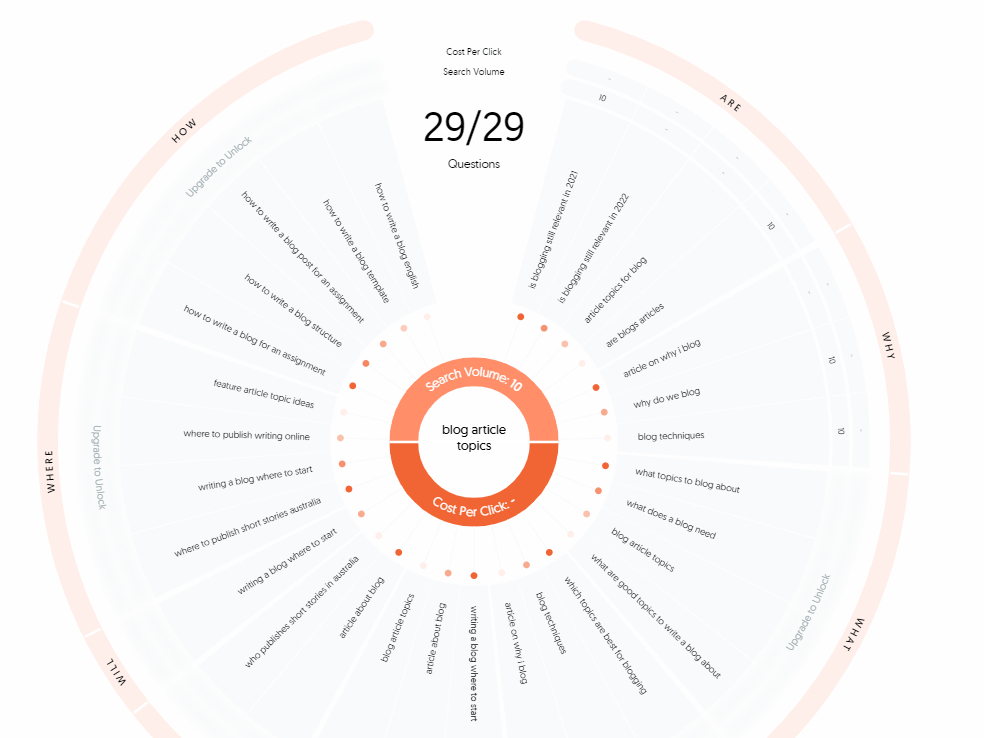Writing original and compelling blog articles can be difficult enough. Sometimes it’s hard to just think of a good idea to start with.
This guide will break down three frameworks you can use to come up with fresh ideas for blog posts. So you can create content that resonates with your audience.
Buyer’s Journey
The Buyer’s Journey helps you develop a deeper understanding of your ideal client’s purchase process. And we all know that the better we understand our audience, the more targeted and tailored our marketing can be. Every interaction with a potential lead can be improved by understanding the decisions they need to make as they move through the buying process.
Buyers are looking for different types of information as each stage of their journey. Your blog should offer content that caters to these different needs.
Exploring the buyer journey can unearth boundless great ideas for blog posts.
There are three main stages in the buyer’s journey – awareness, consideration and decision.
Source: HubSpot
Awareness
A person realises they have a problem. They decide this pain point is something worth easing. They are likely to be looking for more information to help them understand their problem.
Brainstorm all the information your audience needs to help them understand their problem.
- What are the common symptoms or pain points they might experience?
- How can people recognise when they have the problem?
- Does the problem have different names or ways to describe it?
- How serious is the problem? Is it normal to experience this problem?
Consideration
A person begins researching potential solutions to their problem. They educate themselves about different options and approaches.
Consider all the information your audience needs to understand your approach to solving their problem.
- How does it compare to other solutions?
- What are the pros/cons of your solution?
- What should they consider when comparing methods or services?
- Who should NOT choose your service?
Decision
The buyer makes a choice on their preferred solution, strategy, or approach. They now build a list of products, vendors or service providers who can deliver their solution. And they make a final decision to buy.
Now, what information does your audience need to help them choose your solution?
- Who is the best fist for your services?
- What is your unique value proposition?
- Why is your approach better for them?
- What does the process look and feel like after buying?
Blog articles are best suited to the Awareness and Consideration stages. For the Decision stage, direct copy is more effective. For example, sales pages, email marketing, and paid ads. But you could still find some opportunities for blog topics really targeted towards people in that final part of the process.
WWHWW
The next framework for generating ideas for blog posts is very simple. Use the What/Why/How/When/Who prompts to brainstorm the questions your audience might be asking about your area of expertise.
This approach is great because it reflects people’s natural search language. If you check out the popular keyword visualisation tool Answer The Public, you can see they breakdown people’s actual search behaviour using these five categories (plus some others like Can and Will).

Source: Answer The Public
The other thing I like about these five prompts is that you can go both broad and deep. You can start by brainstorming high level questions, and then drill down into each of these to uncover more specific and targeted messages.
For example, a productivity coach might start off with some questions like:
- What are the biggest obstacles to being more productive?
- Why do I procrastinate?
- How can I be more productive?
Then drilling down into the third question, you could explore productivity strategies more deeply:
- What is the Pomodoro technique? How can it make me more productive?
- How do I use time blocking to get more done?
- What apps are out there to help me be more focused?
Now, you might be thinking that these topics all seem pretty generic. And that is true. In the brainstorming phase many of your ideas will feel generic and not original. During the writing phase you can take that topic and turn it into a compelling piece of content. One that showcases your unique perspective, and is targeted to your specific audience. But right now, we just want to generate as many ideas as we can. Prioritising the best ones can come later.
The Two Year Test
What do you know now that you didn’t know two years ago?
This is the basis for the third idea generation framework. This one is especially useful if you find imposter syndrome comes knocking on the door. We often put a lot of pressure on ourselves to create ground breaking and novel content. But is that what your audience needs from you? They might not be ready for ground breaking. They might need more practical, everyday tips that are going to help them get that little bit better.
It is also a great framework if your selling point is that you have gone through the same transformation you now help your clients achieve. You are helping them fast track their progress by learning from your mistakes.
So, grab a piece of paper and brainstorm all the things you have learnt in the past two years. You can focus on your area of expertise, or more broadly about running your kind of business, or your personal and professional development.
For example, my list might include things like:
- The different elements that go into a great sales page
- Writing blog articles faster
- Creating stories from data
- User Experience e(UX) design for intranets
- Internal communication strategies/challenges/success factors
- Getting better briefs from clients so I can deliver better content
- Structured processes to help unearth great content topics
- Time blocking to get more focused work time
For another business owner who wants to write their own content or copy, my experiences can help them. I don’t need to be a guru in copywriting. I don’t need to be proposing fantastical new ways to write content. I just need to share my own knowledge with someone who doesn’t know it yet.
So, there you have it. Three simple but highly effective frameworks that will generate endless ideas for blog posts. Better yet, these ideas can be used to inspire all the other types of content too. I encourage you to set aside 30 mins this week and put one (or all) of these into practice and see what gold you come up with.
Or maybe you would like to work through a structured brainstorming session with a content marketing expert? Check out my Light My Fire content brainstorming sessions. I love bringing helping my client’s see how many opportunities they have to create incredible content their audience will love.




